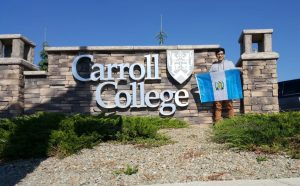Native American Heritage Month
In honor of Native American Heritage Month we asked Global UGRAD student Juan Orozco Coloma to reflect on the importance of studying Native American History, Culture, and Language. As a student at Carroll College, Juan has had the opportunity to learn more about Native American Culture in his studies. Please read his reflection below to learn more about this important part of American identity:

“In the United States, in the year 1500, the estimated population of Native Americans was more than 10 million. But nowadays the population is only around 2.5 million. Most Native American tribes suffered in the past since the beginning of European colonization. They were forced to change their religion, their language, and their way of dressing to a more ‘Americanized’ way. Most people in the United States, do not know the history of these tribes, and they would be surprised how much someone can learn from them. As a civil engineering student, I was amazed by the Hohokam, a Native American tribe in the southwest, that developed a system of canals for irrigation. These canals allowed them to feed up to 80,000 people in an area as hot and dry as Arizona.
I decided to take a course in Native American studies because I come from Guatemala, a country where the biggest ethnic group, which I am a part of, is Mestizo with 41.5% of the population (Mestizo refers to people of mixed Amerindian and European heritage). Separately, 41% of the population originates solely from Amerindian descent. We as a country have learned a lot from the Mayans, their culture, their achievements, and we even learn the native languages in school. This makes us proud of where we come from and make us able to preserve Mayan languages and culture. I believe that it is important to study the history and culture of Native Americans, study their achievements, and learn from them and their culture in order to preserve this part of history.”
